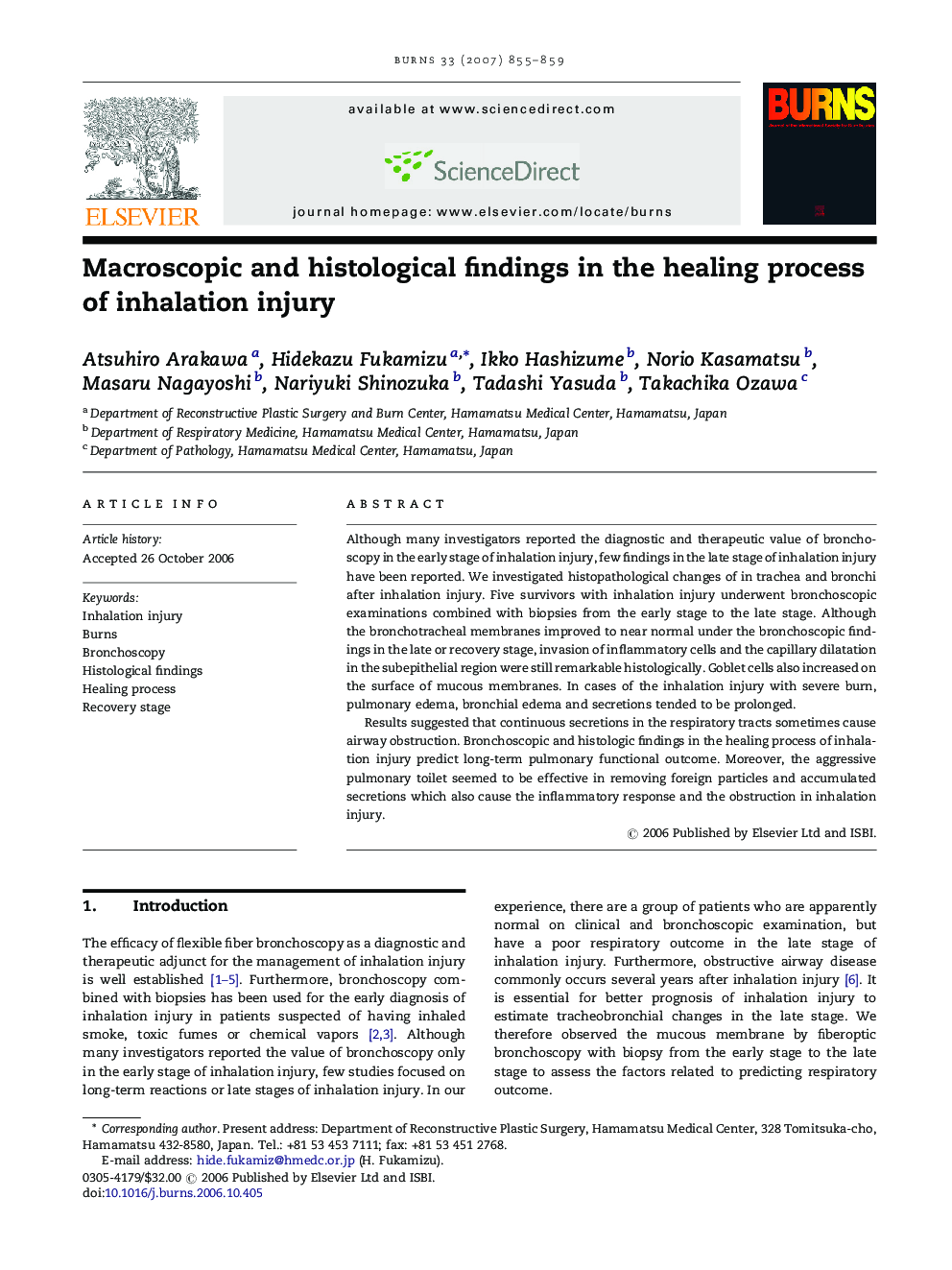| Article ID | Journal | Published Year | Pages | File Type |
|---|---|---|---|---|
| 3106586 | Burns | 2007 | 5 Pages |
Although many investigators reported the diagnostic and therapeutic value of bronchoscopy in the early stage of inhalation injury, few findings in the late stage of inhalation injury have been reported. We investigated histopathological changes of in trachea and bronchi after inhalation injury. Five survivors with inhalation injury underwent bronchoscopic examinations combined with biopsies from the early stage to the late stage. Although the bronchotracheal membranes improved to near normal under the bronchoscopic findings in the late or recovery stage, invasion of inflammatory cells and the capillary dilatation in the subepithelial region were still remarkable histologically. Goblet cells also increased on the surface of mucous membranes. In cases of the inhalation injury with severe burn, pulmonary edema, bronchial edema and secretions tended to be prolonged.Results suggested that continuous secretions in the respiratory tracts sometimes cause airway obstruction. Bronchoscopic and histologic findings in the healing process of inhalation injury predict long-term pulmonary functional outcome. Moreover, the aggressive pulmonary toilet seemed to be effective in removing foreign particles and accumulated secretions which also cause the inflammatory response and the obstruction in inhalation injury.
